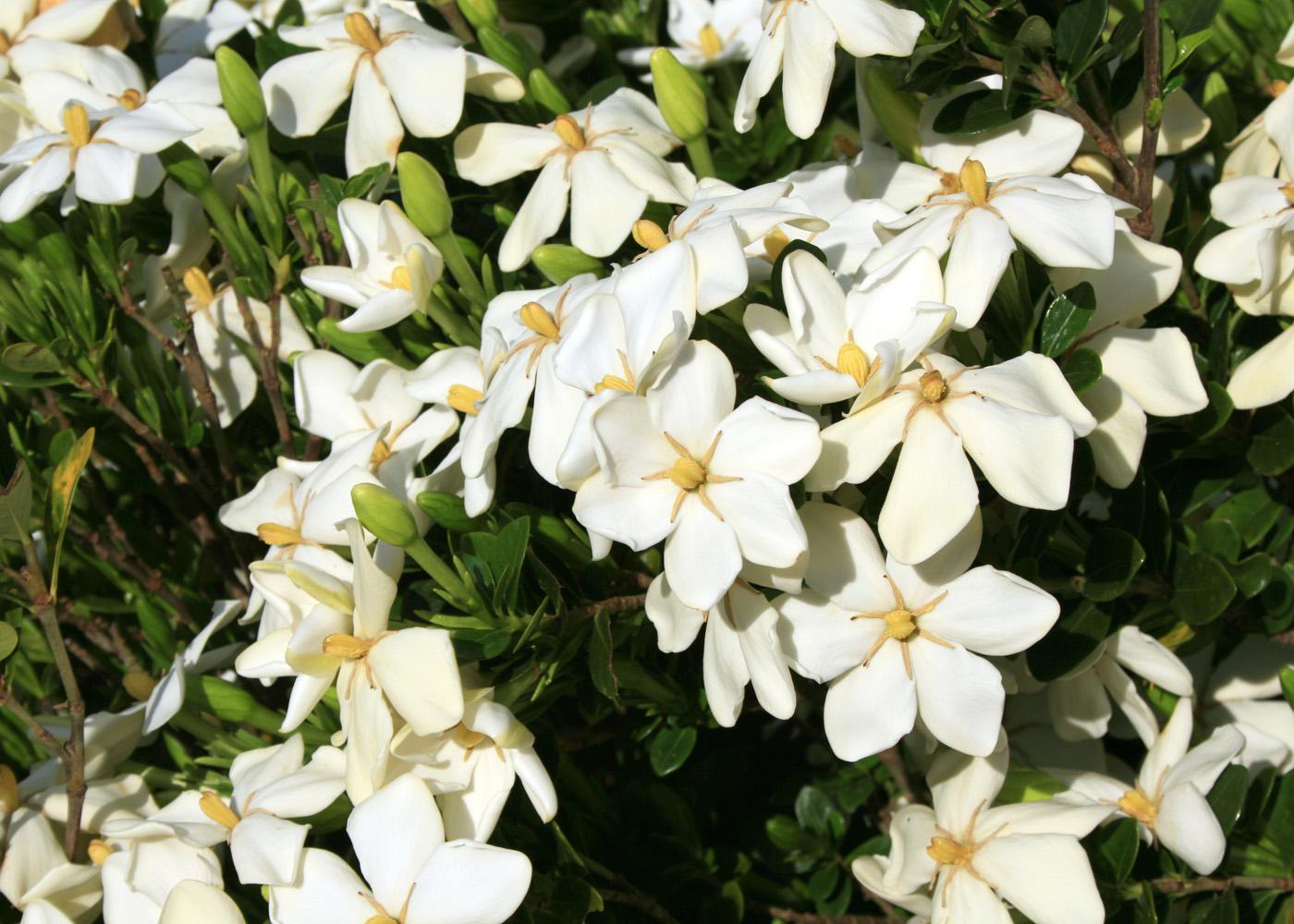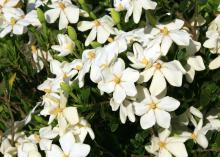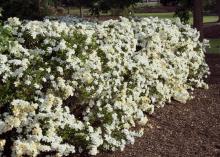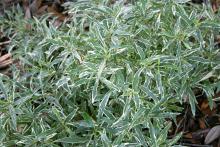Information Possibly Outdated
The information presented on this page was originally released on April 30, 2012. It may not be outdated, but please search our site for more current information. If you plan to quote or reference this information in a publication, please check with the Extension specialist or author before proceeding.
Gardenias bring beautiful smell and look to gardens
One spring-blooming shrub that garners almost as much attention as the azalea is the gardenia. The fragrance of the gardenia flower is beyond description, as it is both heady and strong.
The gardenias for our landscapes are known botanically as Gardenia jasminoides. They were brought to the Southeastern United States in the late 1700s from their native range in Japan and China. Some home gardeners refer to these plants as Cape jasmine.
Gardenia is an evergreen with glossy, dark green leaves. The foliage is up to 4 inches long, and the shrub can grow to 6 feet tall and wide. Flowers emerge white and become yellow before fading to brown. There are both single- and double-flowered varieties to choose from.
Because of the shrub’s size potential, many gardeners like to use gardenia as a focal point or specimen plant in the landscape. A great use is to mass gardenia into a border planting with other colorful shrubs, such as azalea and Knockout roses.
If you want a smaller gardenia, consider planting Gardenia Radicans. This selection will stay less than 3 feet tall. Radicans also has a finer foliage texture, as the leaves are more linear and pointed. There is also Radicans Variegata, which has green-white leaves. This selection has a more horizontal growth habit and makes an unusual ground cover.
Gardenias have the reputation of being a little finicky in the landscape. This may be true for those gardeners who believe in the no-maintenance landscape. However, if given just a little extra care and attention, your gardenias can be the envy of the neighborhood.
Light is an important consideration. Gardenias appreciate being grown in some shade. They can be planted in the full sun as long as they receive protection from afternoon heat. Morning sun with an eastern exposure is a great setting for gardenia.
For gardenia success, always prepare the planting bed with lots of organic matter or compost. Raised beds will help ensure good soil drainage. Never cultivate around the plants once they are established, as the roots do not like to be disturbed. Mulch each year to reduce the occurrence of weeds.
Keep the soil moisture consistent; gardenias do not like to dry out during the dog days of summer. Using drip irrigation is a great way to apply much-needed water to the root system. Drip irrigation will also keep the flowers and foliage dry and prevent leaf spotting.
Gardenias are acid-loving plants and thrive with lower soil pH, so use fertilizers for acid-loving plants. An easy way to fertilize is using an appropriate water-soluble formulation.
In Mississippi, you should have applied fertilizer around the plants in March. Toward the end of May, fertilize again to help replenish nutrients and encourage blooming this summer.
It is a good practice to prune your gardenias after flowering. Pruning will keep the plant tidy and help maintain its desired shape in the landscape.










